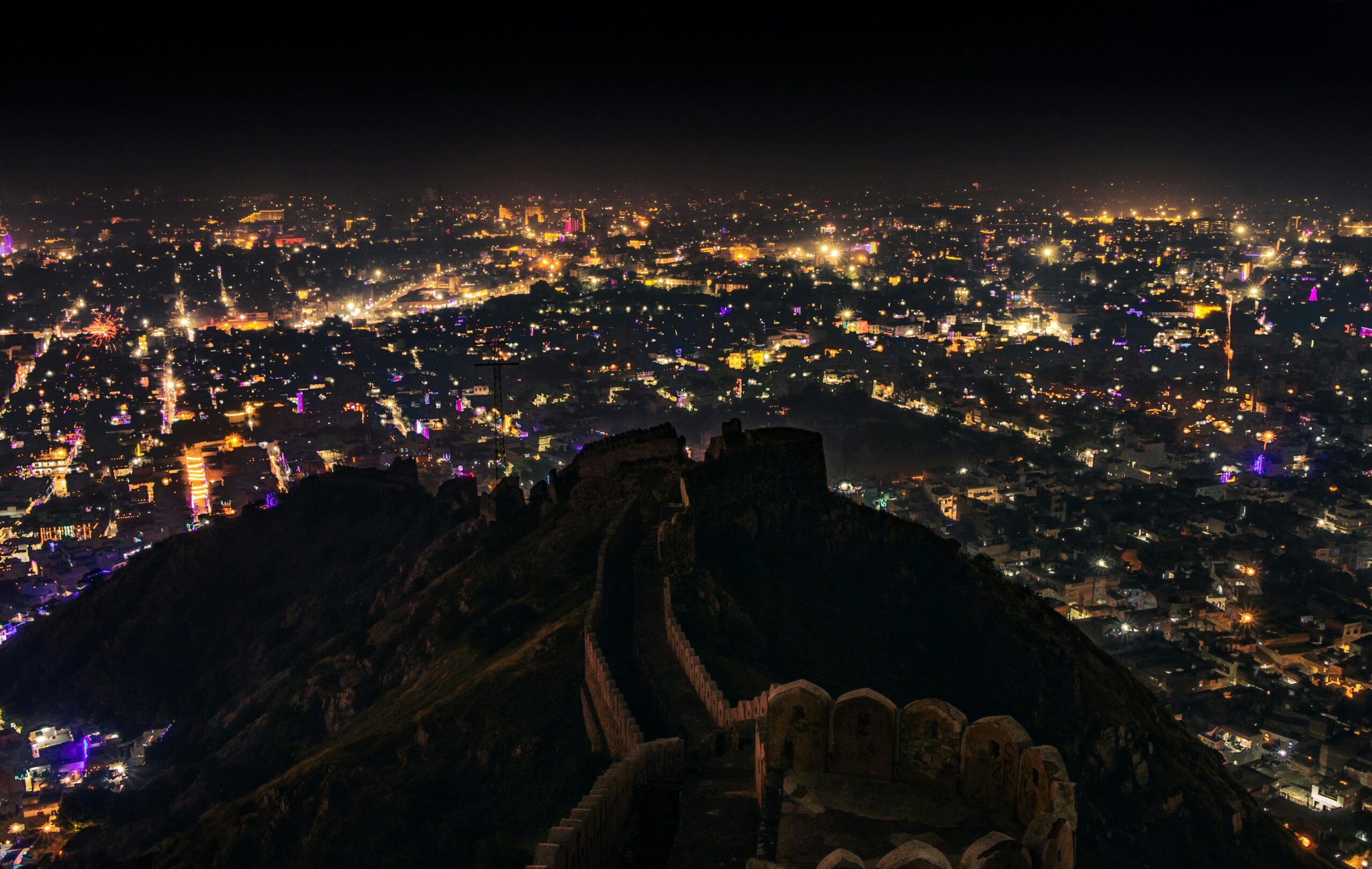
Nahargarh Fort: The Scenic Retreat of Jaipur
Perched on the Aravalli hills, Nahargarh Fort offers a majestic retreat with panoramic views and historical charm. Located approximately 15 kilometers from Jaipur, Rajasthan, this 18th-century fort provides a unique blend of architectural elegance and natural beauty, making it a popular destination for both history enthusiasts and nature lovers.
A Historical Overview
Built in 1734 by Maharaja Sawai Jai Singh II, the founder of Jaipur, Nahargarh Fort was originally intended as a retreat and a pleasure palace. The fort was designed to offer a serene escape from the city’s heat and bustle. Over the years, it has been a royal retreat, a place for leisure, and an important part of Jaipur’s history. The fort’s design reflects a blend of Indian and European architectural styles, showcasing the eclectic tastes of the era.
Why Visit?
- Architectural Charm: Nahargarh Fort features a unique blend of Rajasthani and European architectural styles. The fort’s intricate designs, ornate interiors, and scenic location reflect the opulence and sophistication of the 18th century.
- Panoramic Views: The fort’s elevated position provides stunning views of the Pink City of Jaipur and the surrounding Aravalli hills. The vistas are particularly breathtaking at sunrise and sunset.
Key Attractions Within the Fort
The Main Palace: The fort houses a palace with beautiful rooms and courtyards. The palace interiors, adorned with intricate frescoes and decorative motifs, offer a glimpse into the opulent lifestyle of the royal family.
Rooftop Terraces: Nahargarh Fort’s rooftop terraces are perfect for enjoying panoramic views of Jaipur and the surrounding landscape. These terraces are ideal for taking in the sunset or simply relaxing and soaking in the serene surroundings.
Step Wells: The fort includes several step wells that were designed to provide water during the hot months. These wells are notable for their architectural elegance and historical significance.
Dining and Cafés: The fort has a popular café and dining area where visitors can enjoy refreshments while taking in the scenic views. The café offers a range of snacks and beverages in a charming setting.
Historic Chambers: The various chambers and rooms of the fort, including the king’s quarters, provide insights into the lifestyle and leisure activities of the royal family. The rooms are adorned with period furnishings and decorative elements.
Tips for Your Visit
Best Time to Visit: The ideal time to visit Nahargarh Fort is from October to March when the weather is cooler and more comfortable for exploring. The fort is also popular during the early morning and late afternoon for the best views and cooler temperatures.
What to Wear: Wear comfortable clothing and sturdy shoes suitable for walking. Given the fort’s elevated position, a light jacket or sweater may be useful in the cooler early morning or evening hours.
Photography: Nahargarh Fort offers excellent opportunities for photography. Capture the fort’s architectural details, the panoramic views of Jaipur, and the serene beauty of the surrounding landscape.
Local Cuisine: Enjoy a meal or a snack at the fort’s café, which offers a variety of refreshments and light bites. For a broader selection of local Rajasthani cuisine, explore dining options in Jaipur.
Transportation: Nahargarh Fort is easily accessible by taxi, auto-rickshaw, or private vehicle from Jaipur. The drive up the hill provides scenic views and adds to the overall experience.
Nahargarh Fort is a captivating destination that offers a delightful combination of historical charm, architectural beauty, and stunning natural vistas. Its elevated location, intricate design, and serene atmosphere make it a perfect escape from the city and a memorable experience for visitors. Whether you’re exploring the fort’s historic rooms, enjoying the panoramic views, or simply relaxing in the café, Nahargarh Fort provides a unique and enriching experience in the heart of Rajasthan.
